Super Bowl XVIII - Washington Redskins vs Los Angeles Raiders: Pregame
1983 saw a repeat champion in the NFC and an original AFL team return to the Super Bowl for the third time in eight years but from a different city.
Oakland Raiders owner Al Davis fought a four-year battle with the NFL to move his team to Los Angeles.
- In 1980, he attempted to relocate his team to Los Angeles but was blocked by a court injunction. In response, Davis filed an anti-trust lawsuit against the NFL.
- In June 1982, a federal district court ruled in Al's favor, and the team officially moved to Los Angeles for the '82 season.
- However, the team's base of operations that year was still Oakland. So the coaches, players, and staff lived and practiced in the Bay Area while playing "home" games in the Los Angeles Coliseum.
- The move was complete by 1983.
Fifth-year coach Tom Flores, who had played quarterback for the Raiders for six years, was a beacon of calm on the sea of turmoil.
Several factors kept the Raiders from compiling a better record in line with their talent level.
- A quarterback controversy between Jim Plunkett and Marc Wilson plagued the team for three midseason games.
- The careless Raiders finished -12 in turnover differential thanks to 24 interceptions and 25 lost fumbles versus 37 takeaways.
- But everything meshed during the playoffs, and the Raiders came to Tampa as a dangerous underdog.
TE Todd Christensen feels that the head coach never got the credit he deserved for the Raiders' success. "Tom Flores was a great fit for our team, where you had so many dominant personalities, so many guys who had TV and radio shows, guys who were high profile. A Mike Ditka-type would have been obnoxious and never worked. Flores had the ability to sublimate his ego. He was a calm guy on the sidelines and behind the scenes. Tom was a very bright man, but because of the way things shook out in the organization, he didn't get much publicity. He was underrated in terms of his knowledge of the game. Al Davis got most of the publicity. It may have been the impression, due to his manipulation of the press, that we tried to play football the way Al Davis wanted it played, but in truth the guys didn't give him a second thought. He was famous for his 2 A.M. calls to coaches, but he had nothing to do with game plans and on-the-field activities."
The Raiders offense led the AFC in points scored and ranked 3rd in the entire league.
- The offense was straight out of the 60s when Al Davis was the coach. They still allowed the quarterback to call his own plays.
- Up front was a huge offensive line. All five were 6'3" or more. They averaged 275lb per man. C Dave Dalby was the smallest at 250.
- The leading receivers were TE Todd Christensen with 92 catches, tops in the NFL and the most ever to that point in the NFL, and RB Marcus Allen with 68, which was 29 more than WR Cliff Branch.
The Los Angeles defense finished strong after a mid-season slump.
- Starting with the Redskins game, they gave up 34 or more points in five of six contests. But they surrendered 14 or fewer points in three of the last four regular season games and the two playoff games.
- However, the Raiders led the AFC in points scored (442).
- The unit improved greatly when CB Mike Haynes joined the team in November after his contract was awarded to the Raiders in a settlement that gave his former team, the Patriots, a No. 1 draft choice in 1984 and a No. 2 pick in '85.
- Haynes joined Lester Hayes to form the best cornerback duo in the league. They covered the opponent's best receivers one-on-one, freeing safeties and linebackers to play what Flores called "attack football."
- The three-man front was anchored by NT Reggie Kinlaw, whom opponents consistently double-teamed, allowing the ends, Howie Long and Lyle Alzado, to rush the passer.
- OLB Ted Hendricks, who made the Pro Bowl for the seventh time, was nursing pulled stomach and groin muscles and would play sparingly.

Raiders defensive front: L-R: Matt Millen, Lyle Alzado, Reggie Kinlaw,
Vann McElroy, Ron Nelson, Howie Long 255lb LB Matt Millen, who called the defensive signals, recalled: "That '83 defense was one of the best defenses the NFL has ever seen. Other teams tried to copy it, but you couldn't because there was too much talent there. And the whole thing was based on our corners. Nobody since then has been able to have two corners of that caliber."
Washington defended their NFC Championship thanks mainly to their offense, which led the league in points scored with 541.
- Like the Raiders, the Redskins packed beef in the offensive line. The five Hogs, as they proudly called themselves, averaged 274lbs and, like the Raiders' five, 6'4".
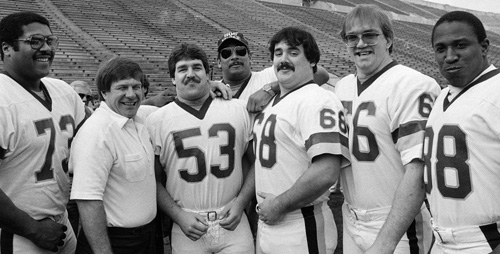 Washington Washington Hogs L-R: Mark Mary, Coach Joe Bugel, Jeff Bostic, George Starke,
Russ Grimm, Joe Jacoby
- As in the previous year, the Skins generally ran a one-back offense with two tight ends. They used only four or five running plays and four or five passing plays in any game. But they ran them from numerous formations with men in motion. "We're pretty basic," said WR Art Monk. "We just have so many formations, it looks like we do more than we really do." Coach Gibbs said, "Everything we do on offense starts with RB John Riggins."
- Defensively the Redskins were first in the league against the run but last against the pass. Three members of their 1982 secondary were no longer with the team because of suspension (S Tony Peters), injury (CB Vernon Dean), and a contract holdout (CB Jeris White).
- But they led the league in time of possession (33:44 per game), touchdowns (63), and points (541). They also surpassed all clubs in turnover ratio: +43 (61 turnovers vs 18 giveaways).
- One suspect area of Washington's game was kicking. P Jeff Hayes averaged only 38.8y per kick. Mark Moseley's field goal percentage from 30y was 61.1. Included were four misses in the NFC Championship between 30 and 45y.
After losing the opener on Monday Night Football to Dallas 31-30, the Redskins reeled off five straight wins.
- Included was the thrilling two-point victory over the Raiders.
- After losing to the Packers in
another one-point high-scoring thriller, Joe Gibbs's club won the remainder of their regular season games.
- That gave them a 14-2 record and a two-game edge over the Cowboys for the NFC East title.
- After a much-needed bye week, Washington destroyed the Los Angeles Rams 51-7 to reach the NFC Championship Game.
- The Skins held a 21-0 lead heading into Q4 in the NFC title game against San Francisco only to have the 49ers rally behind three Joe Montana TD passes to tie the game. But aided by two controversial interference penalties, QB Joe Theismann drove the Redskins close enough for Mark Moseley to boot a 24y FG with 40 seconds left.
- Washington came to the Super Bowl with a 36-6 mark in their last 42 games.
After the teams arrived in Tampa a week before the game, the biggest mystery man was Redskins RB John Riggins, who was notorious for his aversion to the media.
- On photo day, he stood stolidly in the end zone in his uniform and cowboy boots.
- Would he condescend to speak to reporters the next day? He came up the backstairs of the hotel, marched through a kitchen, entered through a stage, and popped out of a curtain. "What, no applause?" he said. He wore an olive flight suit with a white scarf around his thick neck.
- "Last year the Redskins marched through Miami," said Riggins. "This year we fly over L.A. Bombs will be hot and heavy in the first half allowing our troops to position themselves and carry us to victory."
- Asked what he was thinking the day before in the end zone, he replied, "I was standing there looking for a soft place to land. If Lyle Alzado is going to knock my block off, I hope he's a gentleman and hands it back. Those Raiders. They're such bruisers."
- However, reporters noticed that Riggins was drained and noticeably hoarse. He confessed that he was "quite exhausted ... for some reason or another." Asked why, he pointed to the sandy terrain at his home stadium. "I can't help but think that playing on that RFK beach had something to do with it. Either that or I'm getting old." Later in the week, a Redskin official admitted that Riggins had been battling the flu. NT Dave Butz also said he had the flu earlier in the week.
- Theismann talked about the difference in facing the Raiders compared to other teams. "Most teams don't challenge us one-on-one. But the Los Angeles Raiders do. That's the difference between them and the rest of the NFL. They're tough guys. Lyle Alzado's got a nasty image. I expect them to be tough. I'm going to find an alley here in Tampa and get beat up every night ... because Sunday I'd be surprised if I don't get my head handed to me."
The Redskins were not happy with their accommodations in Tampa. They stayed at an airport Holiday Inn while the Raiders were at the Hilton, supposedly because Washington owner Jack Kent Cooke didn't want to impose on his friend Barron Hilton a second time. The rooms were cramped and dingy, and the small lobby made it difficult to exit the hotel without being bothered by drunken fans and autograph seekers.
The practice facilities were even worse. While the Raiders practiced at the Tampa Bay Buccaneers headquarters, the Redskins prepared for the game at the University of South Florida, a school that had no football team and limited resources. During practice on Thursday, four men were caught taking photographs from a nearby building. That day's film was confiscated by NFL security officials. C Jeff Bostic spoke for many Redskins when he said, "I'm convinced Al Davis had us spied on."
The Raiders took a day to adjust to Eastern time.
The difference in the attitudes and habits of the two teams was epitomized by how the players met the press.
The Redskins had Theismann change three-piece suits between TV interviews while the Raiders' Alzado talked to reporters wearing a cut-off T-shirt.
Christensen recalled, "Al Davis didn't worry about the image of his club. I genuinely believe that was a big edge for us. All of us reveled in our renegade image. We had an 'us-against-the-world' attitude, which our coaches played up to motivate us. ... There were many games when we were favorites, but even then we played the role of underdogs because we knew everyone wanted to see us get beat. We enjoyed that. ... We were a group of self-starters, so I don't think we needed someone in charge or an inspirational leader. Instead, we had people like Ted Hendricks who led by example."
The Redskins were consensus three-point favorites. Some said if they beat the Raiders for their second straight Super Bowl championship, they would be consideredone of the best teams to every play in the NFL.
The famous "Jimmy the Greek" Snyder had Washington favored by five. But Christensen said, "Jimmy the Greek confessed to one of our players during Super Bowl Week in Tampa, 'I know you're going to win by two touchdowns or more, but for the sake of the business people around me, I have to make them the favorites."
More from Todd: "I don't remember any speeches in our locker room before the game. There were some guys who were yelling, but in general, no. There were guys who were - I resist saying 'businesslike' because that indicates a degree of sobriety that didn't exist. Yeah, people were excited, but the beating of helmets and jumping on each other was not what the team was about. We understood what he had to do. This particular day there was, for lack of a less dramatic term, a sense of destiny. Any way you look at it, you're making history. We'd come this far and there was a mission that had to be accomplished. I remember overhearing broadcaster Jim Hall outside our team bus saying, 'These guys seem amazingly calm.' He was right. Oh, man - the confidence level was so high."
On the other side, the Redskins bus got lost on the way to the stadium Sunday morning. Defensive coordinator Richie Petitbon recalled, "We got to the stadium just in time to get dressed and get on the field to warm up. And that throws you off, that was a very tiring effect for us. Not that that was the main reason we didn't play good, but it looked like it was just not your day today."
CBS televised the big game, which would draw an estimated 77.62 million viewers. A 30-second commercial cost $368,000.
- Pat Summerall did the play-by-play with John Madden supplying the commentary.
- Jack Buck and Hank Stram handled the CBS radio broadcast.
Barry Manilow sang the National Anthem, and former Los Angeles Ram great Elroy Hirsch performed the opening coin toss.
|
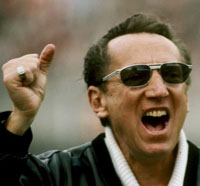
Al Davis
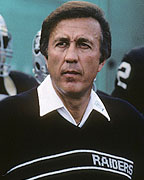
Tom Flores
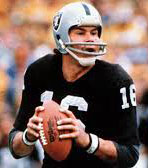
Jim Plunkett
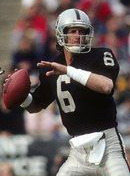
Marc Wilson
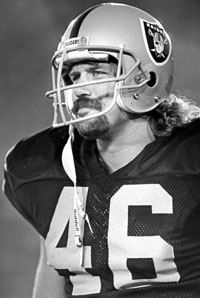
Todd Christensen
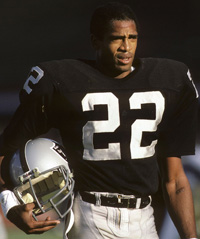
Mike Haynes
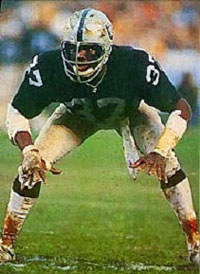
Lester Hayes
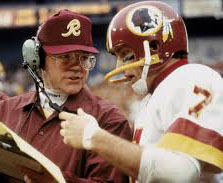
Joe Gibbs and Joe Theismann
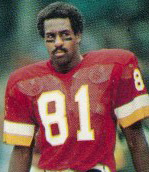
Art Monk
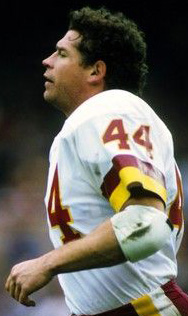
John Riggins

Jeff Hayes
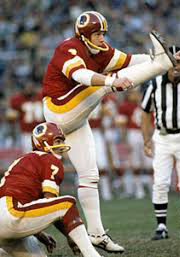
Mark Moseley
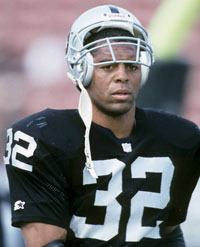
Marcus Allen
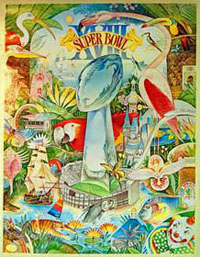
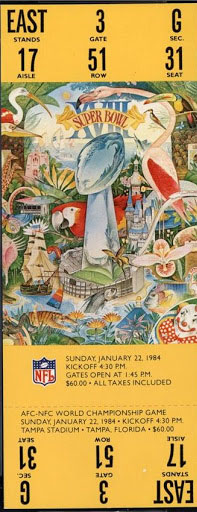

Barry Manilow
|
1983 Washington Redskins
| # |
Player |
Pos. |
Hgt. |
Wgt. |
College |
Exp. |
| 3 |
Mark Moseley |
K |
5-11 |
200 |
Texas A&M/S.F.Austin |
14 |
| 5 |
Jeff Hayes |
P |
5-11 |
175 |
North Carolina |
2 |
| 7 |
Joe Theismann |
QB |
6-0 |
200 |
Notre Dame |
10 |
| 8 |
Bob Holly |
QB |
6-2 |
195 |
Princeton |
1 |
| 12 |
Babe Laufenberg |
QB |
6-2 |
195 |
Indiana |
1 |
| 22 |
Curtis Jordan |
S |
6-2 |
205 |
Texas Tech |
7 |
| 24 |
Anthony Washington |
CB |
6-1 |
205 |
California/Fresno State |
3 |
| 25 |
Joe Washington |
RB |
5-10 |
180 |
Oklahoma |
6 |
| 26 |
Reggie Evans |
RB |
5-11 |
200 |
Richmond |
1 |
| 28 |
Darrell Green |
CB |
5-8 |
170 |
Texas A&M-Kingsville |
1 |
| 29 |
Mark Murphy |
FS |
6-3 |
210 |
Colgate |
6 |
| 30 |
Nick Giaquinto |
RB |
5-11 |
205 |
Bridgeport/Connecticut |
3 |
| 32 |
Vernon Dean |
CB |
5-11 |
180 |
US Int'l, San Diego St. |
1 |
| 39 |
Otis Wonsley |
RB |
5-10 |
215 |
Alcorn State |
2 |
| 41 |
Brian Carpenter |
CB |
5-10 |
165 |
Michigan |
2 |
| 44 |
John Riggins |
RB |
6-2 |
250 |
Kansas |
12 |
| 47 |
Greg Williams |
S |
5-11 |
185 |
Mississippi State |
1 |
| 48 |
Ken Coffey |
S |
6-0 |
190 |
Texas State |
1 |
| 50 |
Larry Kubin |
LB |
6-2 |
235 |
Penn State |
1 |
| 51 |
Monte Coleman |
LB |
6-2 |
230 |
Central Arkansas |
4 |
| 52 |
Neal Olkewicz |
LB |
6-0 |
230 |
Maryland |
4 |
| 53 |
Jeff Bostic |
C |
6-2 |
250 |
Clemson |
3 |
| 54 |
Pete Cronan |
LB |
6-2 |
240 |
Boston College |
6 |
| 55 |
Mel Kaufman |
LB |
6-2 |
220 |
Cal Poly-San Luis Obispo |
2 |
| 57 |
Rich Milot |
LB |
6-4 |
235 |
Penn State |
4 |
| 58 |
Stuart Anderson |
LB |
6-1 |
225 |
Virginia |
2 |
| 60 |
Roy Simmons |
G |
6-3 |
265 |
Georgia Tech |
5 |
| 61 |
Ken Huff |
G |
6-4 |
265 |
North Carolina |
9 |
| 65 |
Dave Butz |
NT |
6-7 |
295 |
Purdue |
10 |
| 66 |
Joe Jacoby |
T |
6-7 |
295 |
Louisville |
2 |
| 67 |
Bruce Kimball |
G |
6-2 |
260 |
Massachusetts |
2 |
| 68 |
Russ Grimm |
G |
6-3 |
275 |
Pittsburgh |
2 |
| 69 |
Perry Brooks |
DT |
6-3 |
270 |
Southern |
5 |
| 71 |
Charles Mann |
DT |
6-6 |
270 |
Nevada |
1 |
| 72 |
Dexter Manley |
DE |
6-3 |
240 |
Oklahoma State |
2 |
| 73 |
Mark May |
G |
6-6 |
295 |
Pittsburgh |
2 |
| 74 |
George Starke |
T |
6-5 |
260 |
Columbia |
10 |
| 77 |
Darryl Grant |
DE |
6-1 |
275 |
Rice |
2 |
| 78 |
Tony McGee |
DE |
6-4 |
250 |
Wyoming/Bishop |
12 |
| 79 |
Todd Liebenstein |
DE |
6-6 |
255 |
UNLV |
1 |
| 80 |
Virgil Seay |
WR |
5-8 |
175 |
Troy |
2 |
| 81 |
Art Monk |
WR |
6-3 |
210 |
Syracuse |
4 |
| 83 |
Mark McGrath |
WR |
5-11 |
175 |
Montana State |
3 |
| 84 |
Mike Williams |
TE |
6-4 |
250 |
Alabama A&M |
2 |
| 85 |
Don Warren |
TE |
6-4 |
245 |
San Diego State |
4 |
| 86 |
Clint Didier |
TE |
6-5 |
240 |
Portland State |
1 |
| 87 |
Charlie Brown |
WR |
5-10 |
180 |
South Carolina State |
1 |
| 88 |
Rick Walker |
TE |
6-4 |
235 |
UCLA |
6 |
| 89 |
Alvin Garrett |
WR |
5-7 |
185 |
Angelo State |
3 |
|
1983 Los Angeles Raiders
| # |
Player |
Pos. |
Hgt. |
Wgt. |
College |
Exp. |
| 6 |
Marc Wilson |
QB |
6-6 |
205 |
Brigham Young |
4 |
| 8 |
Ray Guy |
P |
6-3 |
195 |
Southern Miss |
11 |
| 10 |
Chris Bahr |
K |
5-10 |
170 |
Penn State |
8 |
| 11 |
David Humm |
QB |
6-2 |
190 |
Nebraska |
9 |
| 16 |
Jim Plunkett |
QB |
6-2 |
215 |
Stanford |
13 |
| 20 |
Ted Watts |
CB |
6-0 |
195 |
Texas Tech |
3 |
| 21 |
Cliff Branch |
WR |
5-11 |
170 |
Colorado |
12 |
| 22 |
Mike Haynes |
CB |
6-2 |
190 |
Arizona State |
8 |
| 23 |
Odis McKinney |
S |
6-2 |
185 |
Colorado |
6 |
| 26 |
Vann McElroy |
S |
6-2 |
190 |
Baylor |
2 |
| 27 |
Frank Hawkins |
RB |
5-9 |
210 |
Nevada |
3 |
| 28 |
Cleo Montgomery |
WR |
5-8 |
185 |
Abilene Christian |
4 |
| 31 |
Derrick Jensen |
TE |
6-1 |
220 |
Texas-Arlington |
5 |
| 32 |
Marcus Allen |
RB |
6-2 |
210 |
USC |
2 |
| 33 |
Kenny King |
RB |
5-11 |
205 |
Oklahoma |
5 |
| 34 |
Gregg Pruitt |
RB |
5-10 |
190 |
Oklahoma |
11 |
| 36 |
Mike Davis |
S |
6-3 |
205 |
Colorado |
6 |
| 37 |
Lester Hayes |
CB |
6-0 |
200 |
Texas A&M |
7 |
| 38 |
Chester Willis |
RB |
5-11 |
195 |
Auburn |
3 |
| 45 |
James Davis |
CB |
6-0 |
195 |
Southern |
2 |
| 46 |
Todd Christensen |
TE |
6-3 |
230 |
Brigham Young |
5 |
| 48 |
Kenny Hill |
S |
6-0 |
195 |
Yale |
3 |
| 50 |
Dave Dalby |
C |
6-3 |
250 |
UCLA |
12 |
| 51 |
Bob Nelson |
LB |
6-4 |
235 |
Nebraska |
8 |
| 53 |
Rod Martin |
LB |
6-2 |
225 |
USC |
7 |
| 54 |
Darryl Byrd |
LB |
6-1 |
220 |
Illinois |
1 |
| 55 |
Matt Millen |
LB |
6-2 |
250 |
Penn State |
4 |
| 56 |
Jeff Barnes |
LB |
6-2 |
225 |
California |
7 |
| 57 |
Tony Caldwell |
LB |
6-1 |
225 |
Washington |
1 |
| 58 |
Jack Squirek |
LB |
6-4 |
230 |
Illinois |
2 |
| 61 |
Dave Stalls |
DT |
6-5 |
250 |
Northern Colorado |
7 |
| 62 |
Reggie Kinlaw |
NT |
6-2 |
245 |
Oklahoma |
5 |
| 64 |
Shelby Jordan |
G |
6-7 |
260 |
Washington (MO) |
9 |
| 65 |
Mickey Marvin |
G |
6-4 |
265 |
Tennessee |
7 |
| 66 |
Steve Sylvester |
G |
6-4 |
260 |
Notre Dame |
9 |
| 68 |
Johnny Robinson |
DE |
6-2 |
260 |
Louisiana Tech |
3 |
| 70 |
Henry Lawrence |
T |
6-4 |
270 |
Florida A&M |
10 |
| 71 |
Bill Pickel |
DT |
6-5 |
265 |
Rutgers |
1 |
| 72 |
Don Mosebar |
C |
6-6 |
285 |
USC |
1 |
| 73 |
Charley Hannah |
G |
6-5 |
260 |
Alabama |
7 |
| 75 |
Howie Long |
DE |
6-5 |
270 |
Villanova |
3 |
| 77 |
Lyle Alzado |
DE |
6-3 |
260 |
Yankton |
13 |
| 79 |
Bruce Davis |
T |
6-6 |
280 |
UCLA |
5 |
| 80 |
Malcolm Barnwell |
WR |
5-11 |
185 |
Virginia Union |
3 |
| 82 |
Calvin Muhammad |
WR |
5-11 |
190 |
Texas Southern |
2 |
| 83 |
Ted Hendricks |
LB |
6-7 |
235 |
Miami (FL) |
15 |
| 85 |
Dokie Williams |
WR |
5-11 |
180 |
UCLA |
1 |
| 87 |
Don Hasselback |
TE |
6-7 |
245 |
Colorado |
7 |
| 93 |
Greg Townsend |
DE |
6-3 |
264 |
TCU |
1 |
|
References: The Super Bowl: Celebrating a Quarter-Century of America's Greatest Game (1990)
Super Bowl Chronicles: A Sportswriter Reflects on the First 30 Years of America's Game, Jerry Green (1995)
Super Bowl: The Game of Their Lives, Danny Peary (ed.) (1997)
The Football Game I'll Never Forget: 100 NFL Stars' Stories, selected by Chris McDonell (2004)
The Ultimate Super Bowl Book, Bob McGinn (2009)
50 Years, 50 Moments: The Most Unforgettable Plays in Super Bowl History, Jerry Rice and Randy O. Williams (2015)
Super Bowl Gold: 50 Years of the Big Game, Sports Illustrated (2015)
The Super Bowl: The First Fifty Years of America's Greatest Game, David Fischer (2015)
Hail to the Redskins: Gibbs, the Diesel, the Hogs, and the Glory Days of D.C.'s Football Dynasty, Adam Lazarus (2015)
The First 50 Super Bowls: How Football's Championships Were Won, Ed Benkin (2018)
|
|

 Washington Hogs L-R: Mark Mary, Coach Joe Bugel, Jeff Bostic, George Starke,
Washington Hogs L-R: Mark Mary, Coach Joe Bugel, Jeff Bostic, George Starke,














